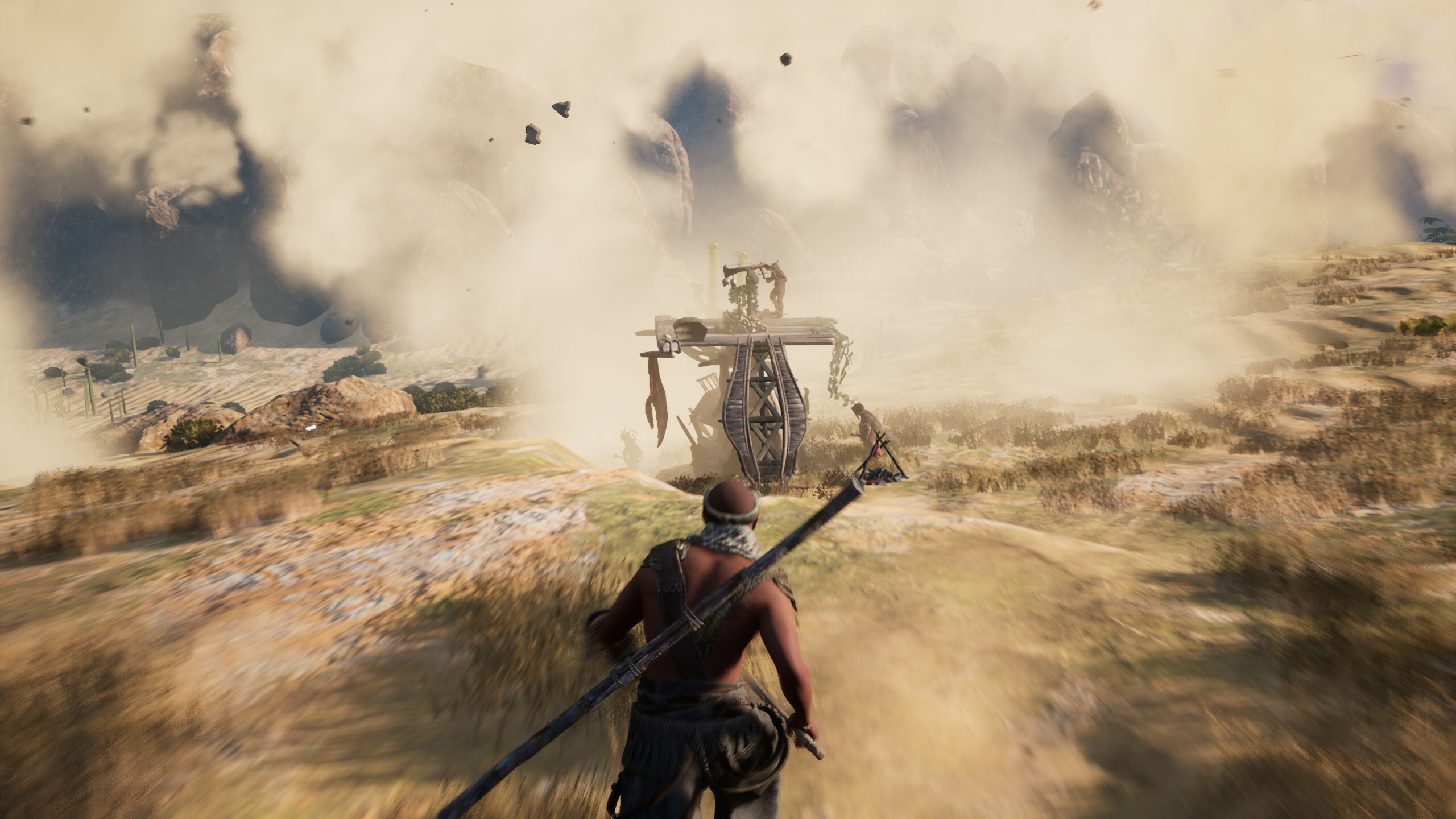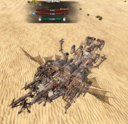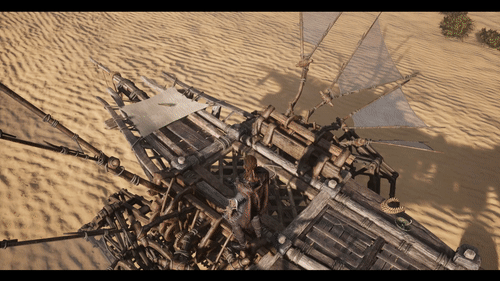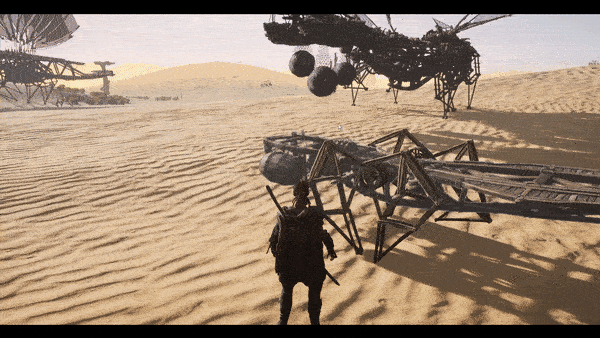
Jul 5, 2022
Last Oasis - chadzTheDonkey
And I should know - I designed it. And more than that, I played it - extensively.
When I say it sucks, I mean I’m not having fun for long when playing it. Not as long as other survival games I enjoy. And I’m not alone with that opinion.
We could argue back and forth why Last Oasis is objectively not fun and what needs to be changed to make it a great experience. We did, actually - for 4 Seasons, to be precise.
And while each season got rid of tons of problems, there was always that one fundamental issue remaining:
I, personally, am not having fun when playing Last Oasis for long.
After Season 4 it finally hit me. I’ve been on a wild goose chase. I’ve been trying to chase down the reason why players don’t have fun in LO. This is a fruitless exercise until I can answer why I am not having fun.
Suddenly, the question was no longer “what can I do to fix LO”. The question became “If I were to make LO from scratch, what would I do”.
And the answer to that question is Season 5 - LOverhaul.
First, the (slightly egotistic) good news: I’m having a blast playing it. In fact, I never, ever, had so much fun in LO by myself. It’s challenging, it’s surprising, it’s rewarding, and I want to keep playing.
Now, for the (slightly) bad news: A lot of you will not like it. The most common feedback was nearly verbatim: “I love it the way it is, but this is way too difficult for the average players”.
For the next few days, we shall put that theory to the test.
LOverhaul has a strong focus on PVE. And the PVE is brutal. The world is in every way trying to actively kill you. The sun will make you constantly struggle for survival. Water is precious. Massive, deadly sandstorms can catch you off guard. Aggressive Rupu are roaming the lands, not only attacking you, but also your structures and your walker - should you even get that far. And if you think those are hard to deal with, wait until you encounter the ones in camps or those manning siege equipment.

The difficulty in Last Oasis used to be non-existent - until you encountered another player, who could destroy everything you owned in under 3 minutes. Now, players will have to make a conscious decision to join PVP when they are ready for it, and the PVE teaches you, through trial and error, how to stay safe.
You will find tools to help you survive this harsh environment, but often you’ll have to make due with situational circumstances. Your tube spade will help you build a small base to keep you safe, but the moment you’re stepping outside - all bets are off.
For some players, this is great. You will have to carve out victory after victory, and each defeat will be a lesson in what you can do better. Every time you manage to come back to your base with some precious loot you feel glorious. Every time your greed gets the better of you, and you bite off a bit more than you can chew, the lesson will be painful but deserved. The game has a lot to explore, and many options become available as you learn the mechanics better.
For others, the experience will be awful. The game no longer holds your hands - at all. No protected slots, no tutorial, no linear missions that gently guide you through progression. Just you and a sandbox full of tools and deadly dangers, and if you don’t think ahead, the world will absolutely punish you.
I don’t want to sugarcoat that. LOverhaul is not a game for everyone. And that’s ok.
However, it’s important to establish a good baseline for those who like the general direction. There’s fun difficulty, there’s challenging difficulty, and there’s ridiculous ragequit difficulty.
I absolutely need your help to establish a good middle ground. Which finally brings us to:
Today we start a small beta test to establish a good baseline for the difficulty. It will be cradle maps in PVE mode and available for about 48 hours. The beta is available to download on a separate branch of your Steam app (right click app - Properties - Betas - betabranch) and the realm will open up about 8 pm CET / 2 PM ET / 11 AM PT. For the next 2 days we’ll be keeping servers up to gather data about the experience, then turn it off again so we can evaluate the result in peace. This will help us establish a baseline of difficulty that we want to see.
We absolutely need your feedback:
A word of advice - if you play it like you used to play LO, you will fail. Ironically, new players seem to fare better than the seasoned ones initially, because the experience is so vastly different. Have an open mind, enjoy, and let me know what you think of this direction.
- chadz
When I say it sucks, I mean I’m not having fun for long when playing it. Not as long as other survival games I enjoy. And I’m not alone with that opinion.
We could argue back and forth why Last Oasis is objectively not fun and what needs to be changed to make it a great experience. We did, actually - for 4 Seasons, to be precise.
And while each season got rid of tons of problems, there was always that one fundamental issue remaining:
I, personally, am not having fun when playing Last Oasis for long.
After Season 4 it finally hit me. I’ve been on a wild goose chase. I’ve been trying to chase down the reason why players don’t have fun in LO. This is a fruitless exercise until I can answer why I am not having fun.
Suddenly, the question was no longer “what can I do to fix LO”. The question became “If I were to make LO from scratch, what would I do”.
And the answer to that question is Season 5 - LOverhaul.
Season 5, aka LOverhaul
First, the (slightly egotistic) good news: I’m having a blast playing it. In fact, I never, ever, had so much fun in LO by myself. It’s challenging, it’s surprising, it’s rewarding, and I want to keep playing.
Now, for the (slightly) bad news: A lot of you will not like it. The most common feedback was nearly verbatim: “I love it the way it is, but this is way too difficult for the average players”.
For the next few days, we shall put that theory to the test.
LOverhaul has a strong focus on PVE. And the PVE is brutal. The world is in every way trying to actively kill you. The sun will make you constantly struggle for survival. Water is precious. Massive, deadly sandstorms can catch you off guard. Aggressive Rupu are roaming the lands, not only attacking you, but also your structures and your walker - should you even get that far. And if you think those are hard to deal with, wait until you encounter the ones in camps or those manning siege equipment.

The difficulty in Last Oasis used to be non-existent - until you encountered another player, who could destroy everything you owned in under 3 minutes. Now, players will have to make a conscious decision to join PVP when they are ready for it, and the PVE teaches you, through trial and error, how to stay safe.
You will find tools to help you survive this harsh environment, but often you’ll have to make due with situational circumstances. Your tube spade will help you build a small base to keep you safe, but the moment you’re stepping outside - all bets are off.
For some players, this is great. You will have to carve out victory after victory, and each defeat will be a lesson in what you can do better. Every time you manage to come back to your base with some precious loot you feel glorious. Every time your greed gets the better of you, and you bite off a bit more than you can chew, the lesson will be painful but deserved. The game has a lot to explore, and many options become available as you learn the mechanics better.
For others, the experience will be awful. The game no longer holds your hands - at all. No protected slots, no tutorial, no linear missions that gently guide you through progression. Just you and a sandbox full of tools and deadly dangers, and if you don’t think ahead, the world will absolutely punish you.
I don’t want to sugarcoat that. LOverhaul is not a game for everyone. And that’s ok.
However, it’s important to establish a good baseline for those who like the general direction. There’s fun difficulty, there’s challenging difficulty, and there’s ridiculous ragequit difficulty.
I absolutely need your help to establish a good middle ground. Which finally brings us to:
LOverhaul Beta - Baseline
Today we start a small beta test to establish a good baseline for the difficulty. It will be cradle maps in PVE mode and available for about 48 hours. The beta is available to download on a separate branch of your Steam app (right click app - Properties - Betas - betabranch) and the realm will open up about 8 pm CET / 2 PM ET / 11 AM PT. For the next 2 days we’ll be keeping servers up to gather data about the experience, then turn it off again so we can evaluate the result in peace. This will help us establish a baseline of difficulty that we want to see.
We absolutely need your feedback:
- Does it feel rewarding?
- Is it tough?
- Is it too tough?
- Is it fair?
- And most of all, are you having fun?
A word of advice - if you play it like you used to play LO, you will fail. Ironically, new players seem to fare better than the seasoned ones initially, because the experience is so vastly different. Have an open mind, enjoy, and let me know what you think of this direction.
- chadz

















